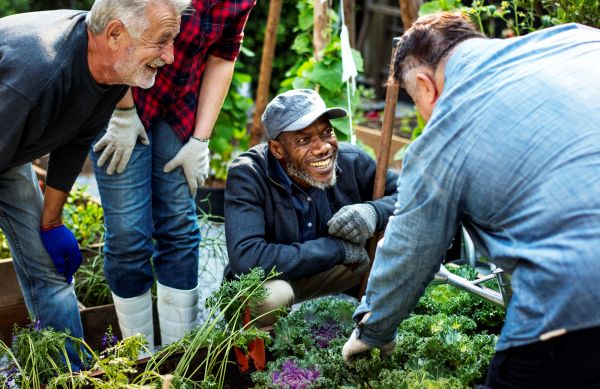In February, the Biden administration announced that they will be lifting the coronavirus public health emergency on May 11, 2023. This transition represents significant progress in pandemic recovery. From navigating the political and logistical complexities of shutdowns, masking, and vaccines to providing essential services, communities have been instrumental in the mitigation of COVID and its health and economic consequences. Now, communities are adapting in anticipation of profound changes as they continue their recovery and resiliency efforts from COVID and its long-term impacts; this is particularly important for communities that have been—and continue to be— disproportionately affected by the pandemic.
To learn how some communities are responding, we spoke with organizations across Massachusetts that have supported their community’s pandemic recovery through the COVID-19 Community Grants program, a statewide COVID-19 equity initiative that was launched in August 2020 by the MA Department of Public Health (DPH) in partnership with Health Resources in Action (HRiA). The goal of the program has been to rapidly invest funding and capacity building support in communities hardest hit by COVID-19, with a focus on Black, Indigenous, and people of color (BIPOC) residents. Over the past three years, the COVID Community Grants Program (herein the Grants Program) has provided funding, training, and technical assistance to over 100 community- and faith-based organizations (CBOs and FBOs, respectively) and Tribal and Indigenous Peoples Serving Organizations (TIPSOs) throughout Massachusetts.
The impact of this work across Massachusetts has been substantial. From April 2021 through October 2022, Grants Program communities had:
- Created 148 new partnerships among CBOs, FBOs, TIPSOs, and other organizations supporting grantee communities
- Contacted nearly 200,000 residents through outreach workers
- Distributed over 542,000 fliers, newsletters, and other education materials
- Held over 2,700 vaccine clinics with 50,000 clinic attendees (these clinics represented more than half of all clinics within the 20 vaccine equity communities)
In this piece, we’ll hear from four partners (JAHAN Women and Youth Intercultural, Massachusetts Council of Churches, OneHolyoke, and Herring Pond Wampanoag Tribe) who have received funding under this grant as they share the impacts of the pandemic, the strategies they used to care for their communities, and their vision for a future beyond COVID.
JAHAN Women and Youth Intercultural
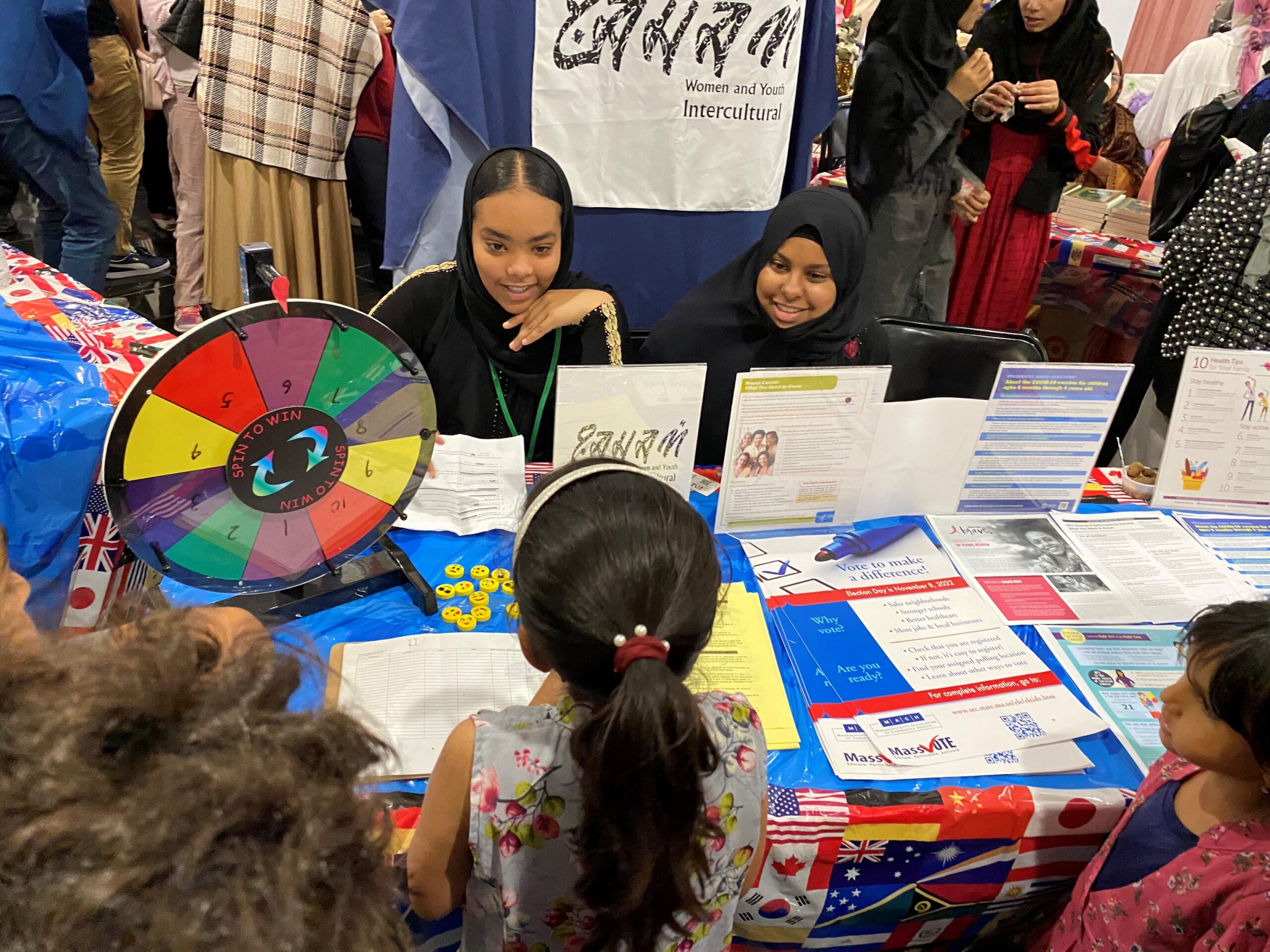
About JAHAN
JAHAN Women and Youth Intercultural (herein JAHAN) is a Boston-based nonprofit organization with a vision to promote culture, heritage, and connection among Muslim youth and families in Massachusetts. Established in February 2020, JAHAN’s launch coincided with the onset of the pandemic which meant they had to shift how they addressed their vision. In those early weeks, JAHAN’s executive director—Gihan Suliman—quickly found herself organizing for families across the state.
“Not everyone has Facebook, but everyone has WhatsApp”
With so many isolated at home during the early weeks of the pandemic, JAHAN used the WhatsApp platform to connect with Muslim families and share COVID resources and information. This platform was already accessible to many in her community, as it facilitates communication with friends and families overseas and did not require advanced technical or language literacy to use. “Not everyone has Facebook, but everyone has WhatsApp. Even folks who do not read or write,” Gihan explained. “That was used to our advantage.” JAHAN extended their reach to entire families by encouraging parents to invite their children to participate in volunteer efforts, such as food distribution or translation of COVID materials. “Parents always complain that ‘kids are not involved.’ So, we encouraged parents to connect with their kids, to bring their kids, to volunteer with us.” Through these strategies, their organizing yielded a network of 600 community members within their first month.
“Partnerships help us grow”
As JAHAN built momentum in the community, they also developed partnerships with other organizations to advance their collective goals. “Partnerships help us grow and allow for more trust between communities,” Gihan said. Through their partnerships with the Greater Boston Food Bank, Waltham Fields Farm, and Partners in Health, JAHAN worked to address food insecurity among families throughout the state. Their partnership with Charles River Community Health was particularly fruitful—they provided outreach opportunities for JAHAN through their Mobile Market program and served as both a vaccine clinic site and source of education on reproductive health for Muslim community members. Other collaborators have included the Harvard University Food Lab (for family-led virtual cooking classes), the Harvard African Language Program (for Arabic film screenings and cultural exchanges), and United Healthcare (for funding free English as a second language [ESL] courses for community members).
Advocating for community needs
A particularly notable partnership is the one JAHAN built with the Massachusetts Department of Public Health (DPH). This partnership began early in the pandemic when DPH responded to JAHAN’s requests for COVID-related materials in more languages, including Arabic, Turkish, Persian, Somali and Urdu. Through this partnership, JAHAN was able to ensure that folks in their community could access COVID-related information in their own language, learn about vaccines through trusted messengers, and receive vaccines in a culturally affirming manner.
The collaboration deepened once vaccines became available. Some of the earliest vaccine clinics, like the one at the Hynes Convention Center in Boston, were first staffed by uniformed and military personnel with little privacy provided to those seeking vaccination. To ensure that the needs of Muslim community members could be accommodated in clinic settings, JAHAN advised DPH on the privacy and staffing requirements to host culturally affirming clinic days for Muslims.
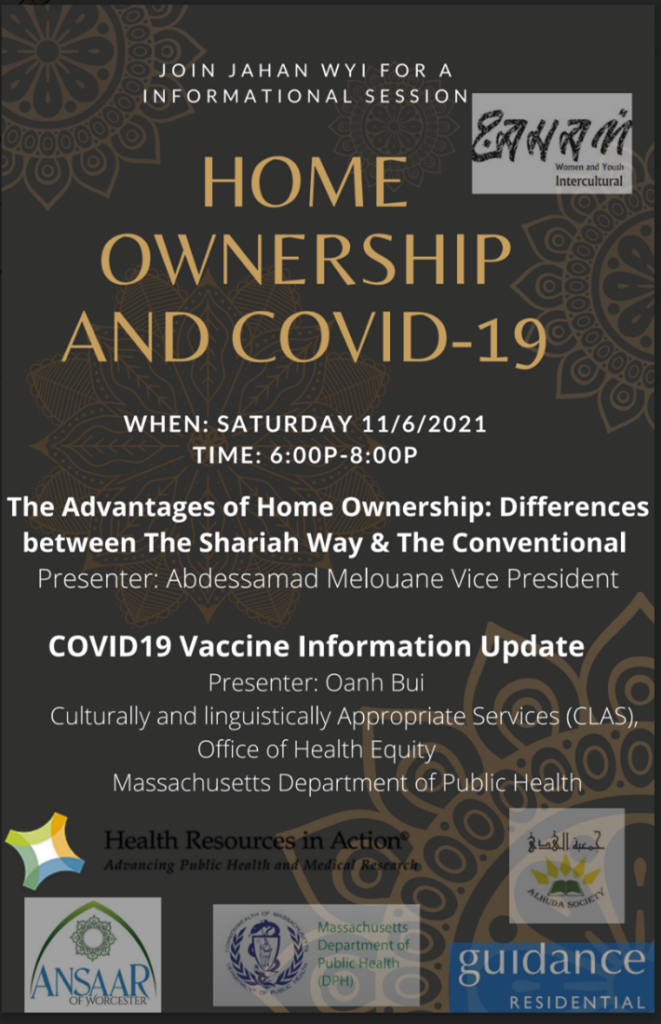
First, Gihan anticipated that the sight of military personnel would be triggering for many in her community who came from countries in conflict. Gihan recalls telling DPH, “this is not the place for them.” Instead, she asked DPH for vaccine providers to not be uniformed. Additionally, early mass vaccine clinics were hosted in large arenas where there was no privacy. Gihan recognized that this would be an uncomfortable setting for women and families in her community and requested that DPH set up private vaccination areas. JAHAN also provided guidance around scheduling clinics so that they wouldn’t coincide with Ramadan, a religious month of fasting in the Islamic faith, to ensure there were no avoidable barriers to receiving the vaccine.
With these accommodations in place, DPH was now set up to successfully deliver vaccines to Muslim communities—they just needed to get the word out. To do this, DPH collaborated with JAHAN and an Islamic bank to host a workshop on homeownership and home loans, a topic of great importance in the community as Islam forbids the payment of interest. During this session, DPH ambassadors delivered educational information on vaccines. By combining vaccine education with homeownership information, JAHAN ensured that the vaccine information and word of the availability of culturally affirming clinics would be heard by participants.
What’s next for JAHAN?
JAHAN is now focusing on supporting economic recovery, engaging with families and youth around mental health, nutrition, and wellness, and promoting health initiatives. Additionally, Gihan is currently developing a workforce development proposal to train community members with clinical backgrounds as Community Health Workers (CHWs). Immigrants who come to the U.S may not always be able to transfer their credentials to working in clinical settings once here, but “they have the clinical knowledge, and know the culture and language,” explained Gihan. “Major hospitals are also looking to hire folks who speak other languages and know the culture of patients they serve.” The CHW training program is an opportunity for folks to apply their clinical and cultural skills to the benefit of their own communities.
Massachusetts Council of Churches
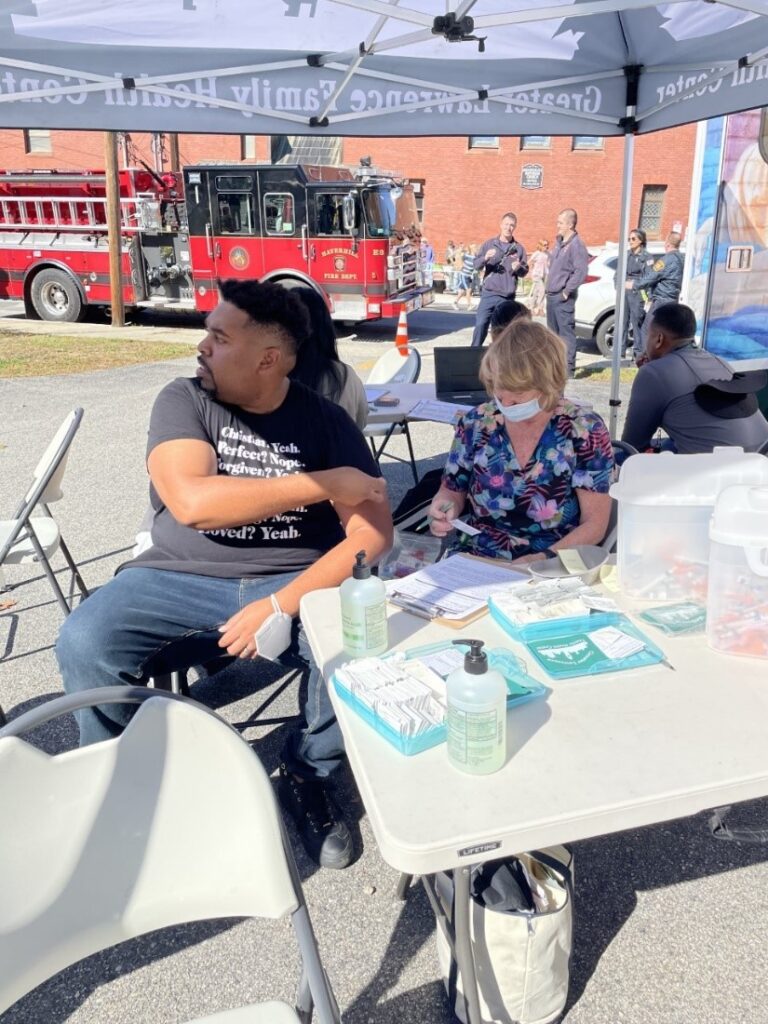
About the Massachusetts Council of Churches (MCC)
The Massachusetts Council of Churches (MCC) is a faith-based network of 14 individuals, congregations, and denominations across the state — including Arabic-speaking Coptic, Tamil-speaking Christians from Sri Lanka and India, and multiple Black churches. Sharing space is central to many faith communities, so when pandemic response curtailed group gatherings, many congregations (including MCC members) were heavily impacted. People wanted to continue to practice their faith but were unsure of how they could do so safely.
Connecting with clergy
It was during this time of uncertainty and social distancing that MCC began to mobilize their network of churches. MCC wanted their faith network to be a safe source of COVID information. MCC’s Reverend Kenneth Young knew that clergy and elders were trusted in their communities, particularly by Black congregants who were fearful of medical institutions due to a history of medical racism, so they started reaching out to clergy. Rev. Young and other faith leaders reached congregants through social media and webinars. Their webinar sessions often had turnouts of up to 70 people, with over 1,000 views online. “We built a relationship with Dr. Regina Larocque, a physician at Mass General Hospital,” Rev. Young said. “She gave on-the-ground perspectives of what was happening in hospitals.” As a clinician with expertise in virology, Dr. Larocque shared her clinical expertise during these webinars by answering congregants’ questions, giving up-to-date changes, and providing accurate information about COVID.
“Where there’s an event, there’s a clinic – we made it our model.”
Through these sessions, MCC developed safety guides for faith communities. “People were wanting to get back to church quickly, but they also wanted to avoid having churches be sites of superspreader events.” Based on trusted sources of COVID information, these guides detailed safe ways for churches to congregate during services, including funerals. They also created non-denominational public service announcements about mitigation strategies. When COVID vaccines became available, they used any opportunity to host a vaccine clinic during church gatherings. “When there’s an event, there’s a clinic—we made it our model.” The combination of vetted guidance delivered by trusted community members in a place where folks feel safe and connected set up MCC as a leader in COVID mitigation in its communities.
Churches as local social service centers
With funding through the Grants Program, MCC deepened their COVID outreach by collaborating with minority churches and churches with fewer resources. Many of these were located across 20 of the most COVID-vulnerable cities in the state. “We asked churches to be what they used to be in their communities – they were local social service centers, in doing what they could to promote community health and wellness,” said Reverend Young. “MCC leveraged that to get churches to email, create social media and mailings for congregants.” These strategies helped draw their communities to get vaccinated; MCC estimates that they’ve vaccinated up to 600 community members.
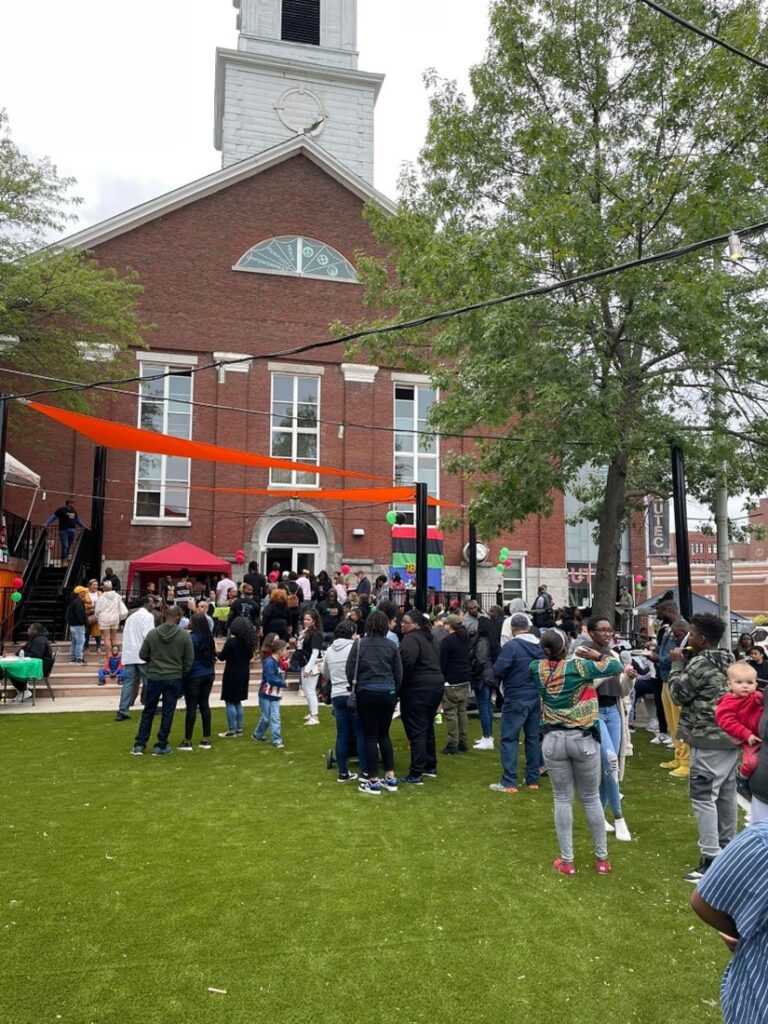
What’s next for MCC?
MCC is now looking to further heal their community, especially the clergy and faith leaders who have been on the COVID frontlines but have not been able to process their experiences. “We are thinking about accumulated grief. Since we work with the leadership of churches, we are seeing layered grief. Pastors are dealing with their own stuff.”
The impacts of social isolation, loss, and resistance from congregants have been felt by faith leaders, and they’re seeing some leaving the vocation. “Churches didn’t get to have funerals during the pandemic, so there’s the grief of not having their traditional practices. There’s also been pushback from congregants around re-opening our churches, limiting the size of crowds, enacting personal protection equipment (PPE) policies indoors, or not hosting children’s services. These were measures pastors tried to keep folks safe, but they angered and frustrated our congregants.” As a result, Rev. Young notes that “a generation of pastors are leaving, especially part-time pastors. They are tired of grief, and they are leaving.”
In addition to supporting the mental wellness of faith leaders, MCC wants to work with churches that are getting involved with their communities, particularly those providing direct services to their congregants. They hope to work on church programming around mental health and grief for families and children. “These issues are cascading – churches will have to step up to fill gaps.”
OneHolyoke
About OneHolyoke

OneHolyoke (OH), a community-based development corporation in the Pioneer Valley, had been mobilizing outreach workers to conduct census work when the first known cases of COVID reached the US in 2020. Census outreach work involved door-knocking residents, striking up conversations with residents at places like supermarkets and small businesses, and providing them with education on why the census was important to fill out. These skills were naturally transferrable to COVID outreach. So, to meet community needs, according to Nayroby Rosa, Director of Community Engagement at OH, “we shifted our strategy from the Census to COVID.” They deepened their community’s trust that summer as they also distributed PPE and free meals to students when schools were closed.
“A bridge between”
When COVID vaccines finally became available a year into the pandemic, OH’s continued outreach positioned them to pivot once again. “That work, and trust, evolved into hosting vaccine clinics,” Nayroby said. By this point, they had begun working with the Grants Program, which helped provide funding and capacity building support to carry out the work. “Receiving the grant really put OH on the map, as a bridge between the health field and what’s going on in the community.”
Centering equity
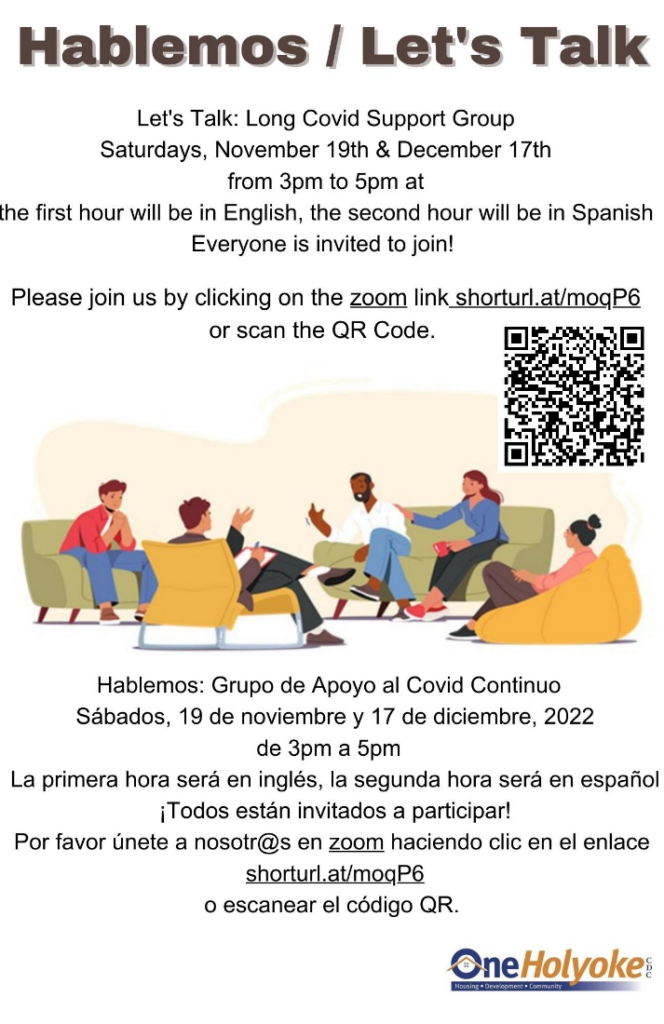
Since being a part of the Grants Program, One Holyoke has vaccinated over 300 community members. Their strategies to reach community members have been eclectic, including appearing on local radio and hosting clinics at malls, farmer’s markets, 5K races, and back-to-school events—any place where they could reach people where they already were. Examples include a clinic at a back-to-school event where local barbers and stylists offered free hair cuts, as well as weekly vaccine clinics hosted with partner Key Foods, a local supermarket. One particularly effective strategy was hosting elections debates and interviews; during these forums, OH promoted vaccine clinics to those who attended to hear from elected officials and nominees. They leveraged this success to apply for other public health and leadership opportunities, like with Neighborworks America. Their experience with this project has led OH to add health and equity in their strategic plan. “It wasn’t there before,” Nayroby explained.
What’s next for OH?
Going forward, OH is thinking about long-term health equity and building leadership from within. “Having created the strategic plan, how do we reduce our vulnerability? How do we create health leaders?” With their COVID work, OH has been organizing discussions around long-COVID and educating their community on its impacts, so that they can work to support them and prevent others from enduring the same.
Prevention is a key piece of their strategic plan. They want to focus on what routine care is needed to keep their community healthy; from mental health counselors, to education, to housing needs. “What can we do to make these learnings from COVID stick, and not wait on another emergency?”
Herring Pond Wampanoag Tribe
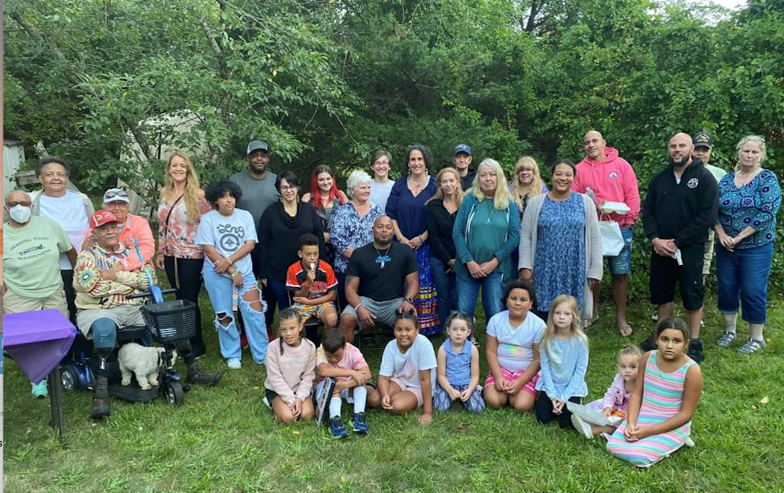
About Herring Pond Wampanoag Tribe
Herring Pond Wampanoag Tribe (HPWT) is a tribe serving a community of about 180 members in the unceded lands of the Wampanoag people (Plymouth, MA). Given the small size of the tribe and the lack of federal recognition status, HPWT has been under-resourced compared to other tribal groups in the area. When pandemic-related shutdowns began in 2020, HPWT felt slammed and scared. “COVID put distance between the tribe when we [were] trying to heal,” said Melissa Ferretti, Chairlady (Chairperson) of the tribe. Despite the lack of federal resources at the time, they sprang into action, training elders on Zoom and conducting home visits while masked. With funds from the Grants program, they began to build critical capacity within their community, purchasing computers, filing cabinets, and PPE. After vaccines became available, they returned to in-person tribal meetings. However, COVID vaccines and guidelines introduced other challenges. (HPWT was granted state recognition in 2024.)
“We walk in two worlds”
As we all know, differing beliefs and preferences around COVID prevention strategies and vaccines created widespread division within families and communities. However, tribal peoples encountered additional challenges when it came to COVID communications: indigenous people’s deep mistrust of the government, and the penchant for holistic living without the influence of western medicine. Still, many wanted to practice mitigation strategies like masking and were open to vaccination. These factors created friction within the tribe. “As indigenous people, we really walk in two worlds,” said Jill Lauzon, tribe elder. “You have to come up with unique ways to not offend family; sometimes you have to take a step back and think about those challenges in how your constituents are your family as a tribal community.”
“Give them the right information”
To address the fundamental needs while remaining sensitive to various beliefs and preferences, HPWT delivered education under the title “Health and Wellness.” They included COVID-related educational materials inside of a wellness kit and distributed them at meetings and gatherings. They also embedded COVID information into their regular newsletter alongside valuable information on diabetes and other health issues of concern to the community. Their careful framing of COVID information allowed them to provide education and resources to their tribe without creating further division. “Give them something positive,” Melissa said, “but give them the right information.” Through grant funds and careful communication, HPWT was able to hold several successful vaccination clinics where they helped 30 young people get vaccinated.
“Everyone is essential for our well-being”
Herring Pond’s work over the past three years has ultimately strengthened tribal ties, expanding their reach and impact. For instance, the use of the Zoom platform allows tribal members in Washington and Arkansas to join virtually as can others who prefer to join by video, which has boosted participation. The community has also adopted the technology to improve access to healthcare, specifically for mental health. “We learned how essential our communities; our friends and our families were,” Melissa explained. “We have learned not to take people for granted, and everyone is essential for our well-being. It’s the small things that made the big difference.”
What’s next for HPWT?
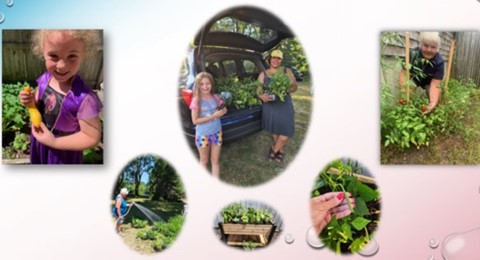
While they were investing their time and resources on COVID prevention and mitigation, HPWT kept an eye on their future—food sovereignty, security, and sustainability. In addition to critical supplies, they also invested in elevated garden beds and rain barrels to support the creation of a community garden. They plan to focus on families with children up to 12 years old— “up-and-coming gardeners” and elders. The benefits are three-fold, as this strategy will provide nutritious homegrown food, build connections, and support health and mental wellness in the community. Still, HPTW will not lose site of the fact that COVID is not going away, and that there is a lot of healing to be done, particularly when it comes to mental health. Melissa summarized it as such: “Life has changed as we knew it, but there is hope that things will return back to normal or as close as we can get it.”
Conclusion
These stories demonstrate the central role that communities play in creating a resilient future for us all. Each of these organizations have dedicated immense time and resources to support their communities throughout the pandemic, from rapid response to recovery and beyond. As we shift to a “post-COVID” world, this work will inevitably change once again, and it will take different shapes in diverse communities across the Commonwealth. Some will focus their future efforts on mental health and healing (like MCC and HPWT) and others will focus on developing community leaders (like JAHAN and OH). A common theme among this wide-ranging work is that these organizations are deeply connected with their communities. Through these connections, they can build trust and be responsive to community needs as they continue to heal and develop long-term resiliency in their communities and beyond.
Much of the work described above was supported by HRiA’s COVID-19 Community Grants Program with funds provided by the Centers for Disease Control and Prevention and the Massachusetts Department of Public Health.
Many thanks to our featured community leaders – Gihan Suleiman, Executive Director of JAHAN Women and Youth Intercultural; Reverend Kenneth Young, leader of MA Council of Churches; Nayroby Rosa, Director of Community Engagement at One Holyoke; Melissa Ferretti, Chairlady (Chairperson) of the Herring Pond Wampanoag Tribe; and Jill Lauzon, tribe elder, Herring Pond Wampanoag Tribe—and their many partners, our collaborators at DPH, and the entire Grants Program team at HRiA (especially Tamika Francis for conducting interviews and Daisy Ortega and Tracy Kelley-Johnson for their edits).
